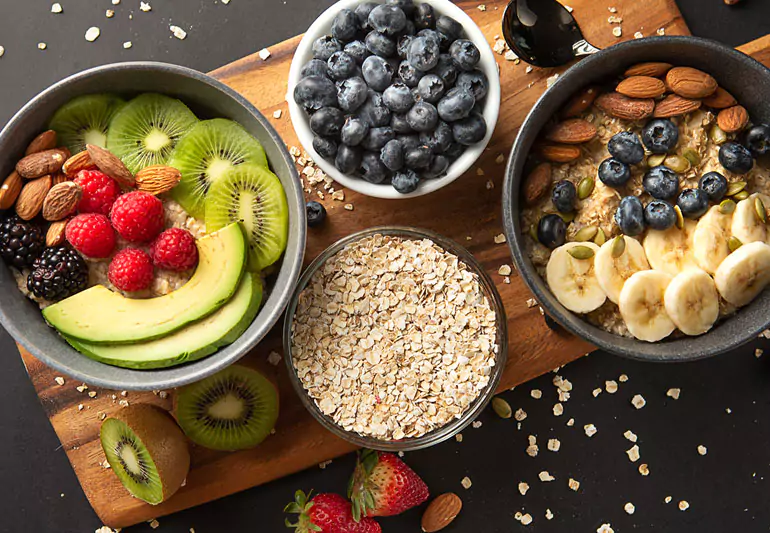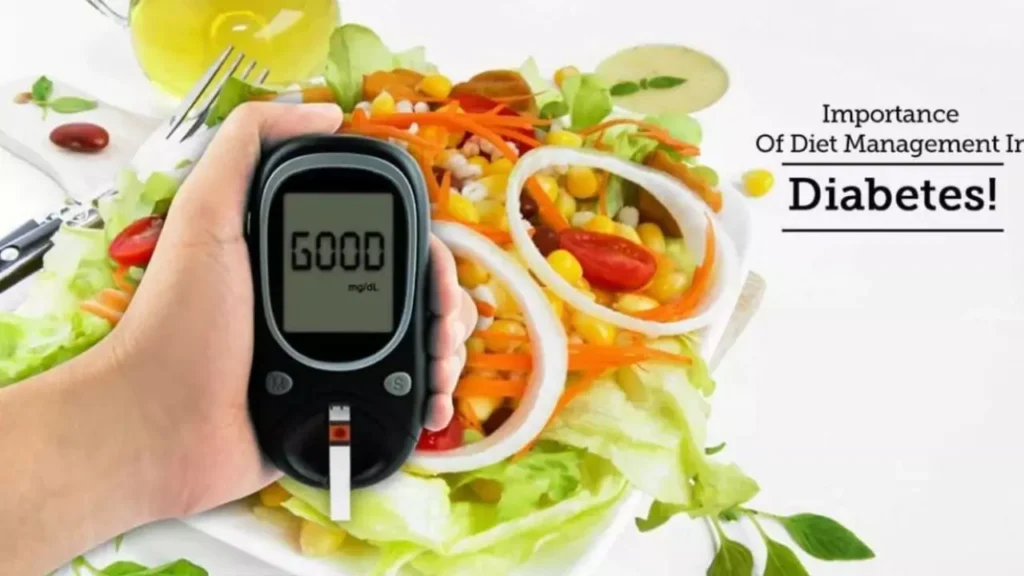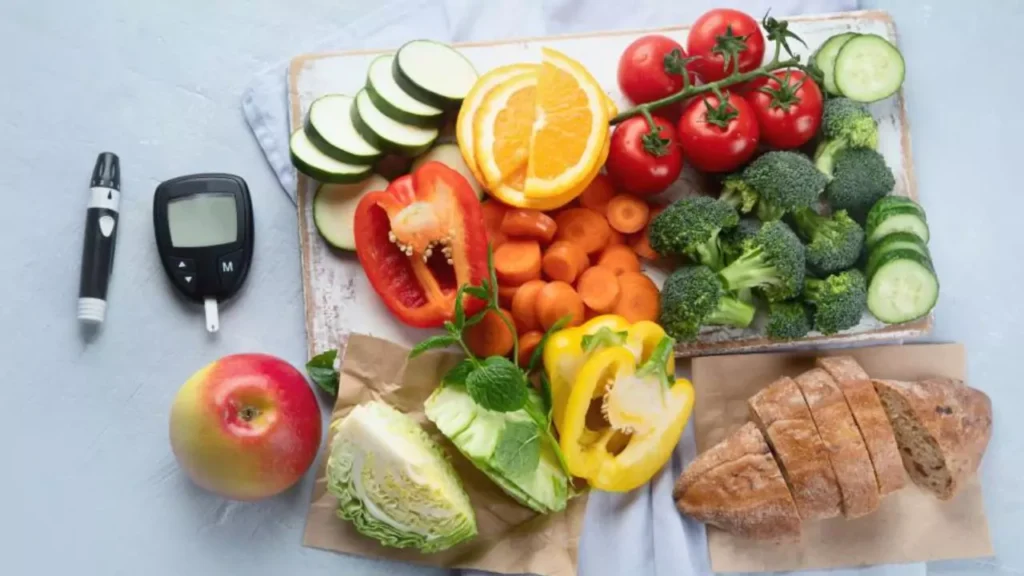A low-carb diabetes diet plan can be both effective and easy to follow. Read on to learn what you can and can’t eat to keep your blood sugar levels in check.

Diabetes is a debilitating condition that millions of people worldwide suffer from. Eating a balanced diet is one strategy to manage diabetes and blood sugar levels. It keeps your general health in check and helps you stay in good physical shape. All nutrients are crucial for managing diabetes, but did you realize that carbs significantly affect your blood glucose levels? During digestion, carbohydrates are converted to glucose, which has an immediate impact on blood sugar levels.
Table of Contents
What is diabetes?
Elevated blood sugar, or glucose levels, are an indicator of diabetes, a metabolic illness. It makes it more difficult for your body to make or use insulin, a pancreatic hormone that helps control how much glucose is absorbed by cells to provide energy. There are primarily two kinds: Type 1 and Type 2.
When a person has Type 1 diabetes, their immune system begins to attack the pancreatic cells that make insulin. Conversely, type 2 diabetes usually appears later in life and is characterized by insulin resistance, or the body’s cells’ inability to respond to insulin as intended.
The role of diet in managing diabetes
Dietitian Garima Goyal states that selecting complex carbohydrates with a low glycemic index (GI) is advised while discussing the importance of diet. Low-GI foods release glucose gradually, reducing the risk of abrupt blood sugar rises. Whole grains, legumes, veggies, and fruits like berries are some low-GI foods. Whole grains and veggies, which are high in fiber, also slow down the absorption of glucose, which helps to stabilize blood sugar levels.

It’s crucial to balance meals by including a range of beneficial fats, lean proteins, and carbohydrates. Because proteins and lipids inhibit the absorption and digestion of sugars, they can help stabilize blood sugar levels. According to her, it can be advantageous to include lean protein sources like fish, fowl, tofu, and lentils. Nuts, avocados, and olive oil are good sources of healthy fats that give you long-lasting energy without significantly raising your blood sugar levels.
How do carbs impact diabetes?

Because they are converted during digestion into glucose, carbohydrates have a direct effect on blood sugar levels and diabetes. It is essential to comprehend this effect in order to appropriately manage diabetes.”Controlling carbohydrate intake is crucial for people with diabetes to prevent blood sugar spikes,” says Goyal.
How many carbs should diabetics consume?
The ideal intake of carbohydrates for people with diabetes can change depending on their age, weight, degree of exercise, and general health. The dietitian states that creating a low-carb diabetes diet plan requires careful consideration of individual needs and should be done in conjunction with medical authorities. Generally speaking, there are certain rules that people with diabetes need to take into account.
1. Count the carbs
This involves tracking the total grams of carbohydrates consumed per meal and matching it with insulin or adjusting medications accordingly.
2. Glycemic Index (GI)
Choosing carbohydrates with a low glycemic index may be beneficial, as they cause a slower rise in blood sugar levels. Foods with a lower GI include whole grains, legumes, and certain fruits and vegetables.
3. Portion control
Controlling portion size is essential to prevent the body from becoming overloaded with sugars all at once. Blood sugar levels can be stabilized with the use of well-balanced meals that contain a variety of carbohydrates, lean proteins, and healthy fats.
4. Follow a mixed mealtime
Blood sugar levels can be regulated by eating meals and snacks at regular intervals throughout the day. Significant swings in blood glucose are avoided by distributing the consumption of carbohydrates evenly throughout the day.
5. Consider your individual needs
Individual needs and tastes must be taken into account when determining the appropriate amount of carbs to consume, as each person’s body reacts to them differently. Frequent blood sugar monitoring gives important information to help modify a diet.
Sample low-carb diabetes diet plan
Breakfast
- 1 serving of oatmeal made with water or low-fat milk
- Topped with sliced strawberries and a tablespoon of chopped nuts (e.g., almonds or walnuts)
- 1 boiled egg
- Black coffee or herbal tea (unsweetened)
Mid-Morning Snack
- Greek yogurt (unsweetened) with a handful of blueberries
- A small handful of raw almonds
Lunch
- Grilled chicken or tofu salad with mixed greens, cherry tomatoes, cucumber, and bell peppers
- Quinoa or brown rice as a side
- Olive oil and lemon dressing
- Water or herbal tea (unsweetened)
Afternoon Snack
- Sliced apple with a tablespoon of peanut butter (no added sugar)
- Carrot and cucumber sticks
Dinner
- Baked salmon or a plant-based protein alternative (e.g., lentils, chickpeas)
- Steamed broccoli and cauliflower
- A small serving of sweet potato or quinoa
- Mixed green salad with vinaigrette dressing
- Water or herbal tea (unsweetened





[…] to a close, it’s time to let go of your bad eating habits and adopt these 7 healthy eating food resolutions that will help you become the healthiest version of yourself by 2024. To learn more, […]
[…] 7 New Year’s Food Resolutions For A Healthier You In 2024Follow this low-carb diabetes diet plan to keep your blood sugar levels in check in 2024 […]